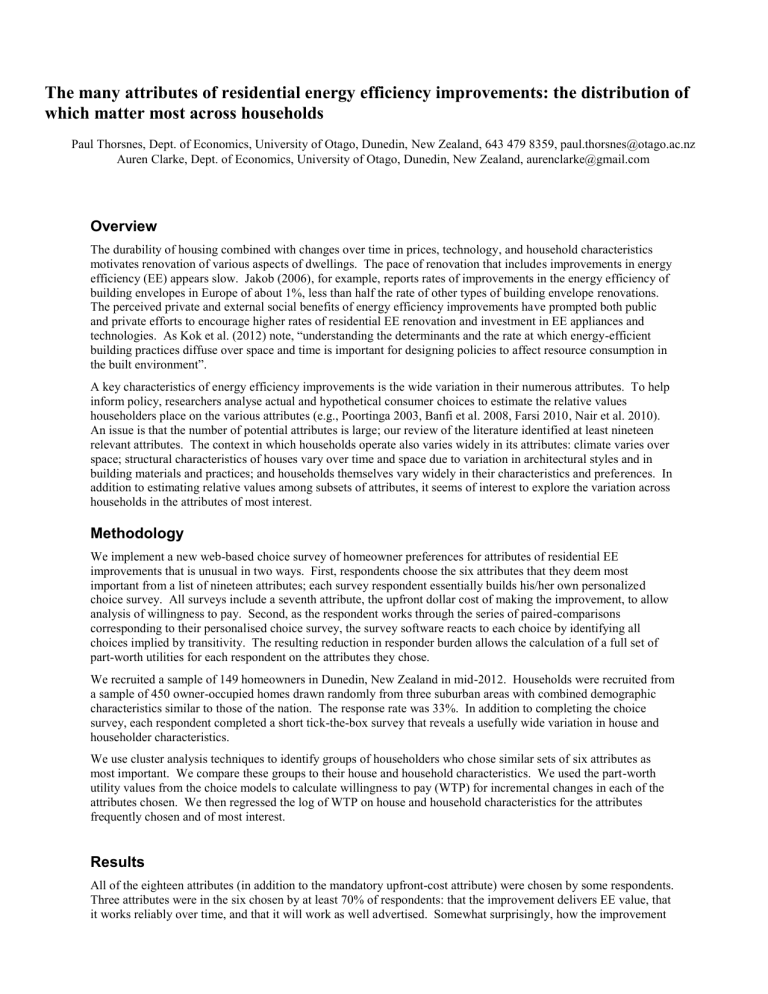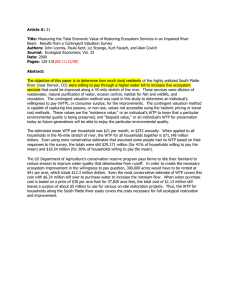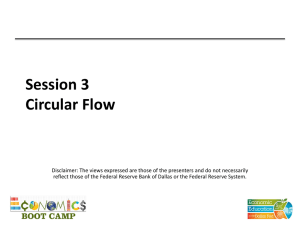The many attributes of residential energy efficiency improvements

The many attributes of residential energy efficiency improvements: the distribution of which matter most across households
Paul Thorsnes, Dept. of Economics, University of Otago, Dunedin, New Zealand, 643 479 8359, paul.thorsnes@otago.ac.nz
Auren Clarke, Dept. of Economics, University of Otago, Dunedin, New Zealand, aurenclarke@gmail.com
Overview
The durability of housing combined with changes over time in prices, technology, and household characteristics motivates renovation of various aspects of dwellings. The pace of renovation that includes improvements in energy efficiency (EE) appears slow. Jakob (2006), for example, reports rates of improvements in the energy efficiency of building envelopes in Europe of about 1%, less than half the rate of other types of building envelope renovations.
The perceived private and external social benefits of energy efficiency improvements have prompted both public and private efforts to encourage higher rates of residential EE renovation and investment in EE appliances and technologies. As Kok et al. (2012) note, “understanding the determinants and the rate at which energy-efficient building practices diffuse over space and time is important for designing policies to affect resource consumption in the built environment”.
A key characteristics of energy efficiency improvements is the wide variation in their numerous attributes. To help inform policy, researchers analyse actual and hypothetical consumer choices to estimate the relative values householders place on the various attributes (e.g., Poortinga 2003, Banfi et al. 2008, Farsi 2010, Nair et al. 2010).
An issue is that the number of potential attributes is large; our review of the literature identified at least nineteen relevant attributes. The context in which households operate also varies widely in its attributes: climate varies over space; structural characteristics of houses vary over time and space due to variation in architectural styles and in building materials and practices; and households themselves vary widely in their characteristics and preferences. In addition to estimating relative values among subsets of attributes, it seems of interest to explore the variation across households in the attributes of most interest.
Methodology
We implement a new web-based choice survey of homeowner preferences for attributes of residential EE improvements that is unusual in two ways. First, respondents choose the six attributes that they deem most important from a list of nineteen attributes; each survey respondent essentially builds his/her own personalized choice survey. All surveys include a seventh attribute, the upfront dollar cost of making the improvement, to allow analysis of willingness to pay. Second, as the respondent works through the series of paired-comparisons corresponding to their personalised choice survey, the survey software reacts to each choice by identifying all choices implied by transitivity. The resulting reduction in responder burden allows the calculation of a full set of part-worth utilities for each respondent on the attributes they chose.
We recruited a sample of 149 homeowners in Dunedin, New Zealand in mid-2012. Households were recruited from a sample of 450 owner-occupied homes drawn randomly from three suburban areas with combined demographic characteristics similar to those of the nation. The response rate was 33%. In addition to completing the choice survey, each respondent completed a short tick-the-box survey that reveals a usefully wide variation in house and householder characteristics.
We use cluster analysis techniques to identify groups of householders who chose similar sets of six attributes as most important. We compare these groups to their house and household characteristics. We used the part-worth utility values from the choice models to calculate willingness to pay (WTP) for incremental changes in each of the attributes chosen. We then regressed the log of WTP on house and household characteristics for the attributes frequently chosen and of most interest.
Results
All of the eighteen attributes (in addition to the mandatory upfront-cost attribute) were chosen by some respondents.
Three attributes were in the six chosen by at least 70% of respondents: that the improvement delivers EE value, that it works reliably over time, and that it will work as well advertised. Somewhat surprisingly, how the improvement
looks and the improvement’s potential to disturb householders or their neighbours were chosen by fewer than 15% of respondents. However, about a third included impact on the environment as one of their chosen six attributes.
The k means clustering algorithm was run multiple times. The attributes that most frequently distinguished clusters were: EE value (distinguished in 100% of trials), positive environmental impact (90%), at least partial independence from the energy grid (85%), effort required to operate the improvement (75%), contributes to ventilation of the home (60%), and does not require structural alterations (60%). House and household characteristics correspond weakly, but sensibly to the cluster solutions.
The WTP regressions reveal that household income, not surprisingly, is the strongest influence on WTP. People of retirement age tend to have less WTP for long-term aspects of improvements, such as its lifespan or its effect on the environment, all else constant. Less educated males have higher WTP for the ability to install the improvement themselves (DIY). Finally, household composition influences WTP for lower maintenance requirements, longer improvement lifespan, and environmental sustainability. Again, the overall explanatory power of house and household characteristics was modest.
Conclusions
The main conclusion is that the attributes of EE improvements towhich households are most sensitive varies significantly across households. In this sample, attributes related to the most basic performance characteristics of the improvement are the most widely regarded as important. This suggests that lack of reliable information about or confidence in the performance of improvements may explain low uptake. Other attributes also matter, however, and the variation across households in preferences only weakly correspond to house and household characteristics. Onesize-fits-all policies or policies directed at demographic segments may have less-than-expected appeal. Consistent with, for example, Kok et al. (2012), reliable information about the attributes of improvements and the range of contexts for which they are suited might be of particular value.
References
Banfi, S., M. Farsi, M. Filippini, and M. Jakob (2008), “Willingness to pay for energy-saving measures in residential buildings,” Energy Economics , 30: 503-16.
Farsi, M. (2010), “Risk aversion and willingness to pay for energy efficient systems in rental apartments,” Energy
Policy , 38: 3078-3088.
Jakob, M. (2006), “Marginal costs, cost dynamics and co-benefits of energy efficiency investments in the residential buildings sector,” Energy Policy , 34: 172-187.
Kok, N., M. McGraw, and J.M. Quigley (2012), “The diffusion over time and space of energy efficiency in building,” Annals of Regional Science , 48: 541-564.
Nair, G., L. Gustavsson, and K. Mahapatra (2010), “Factors influencing energy efficiency investments in existing
Swedish residential buildings,” Energy Policy , 38(6): 2956-2963.
Poortinga, W., L. Steg, C. Vlek, and G. Wiersma (2003), “Household preferences for energy-saving measures: A conjoint analysis,” Journal of Economic Psychology , 24: 49-64.











